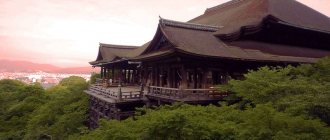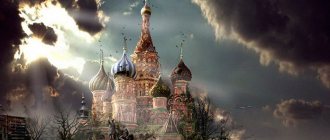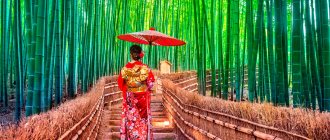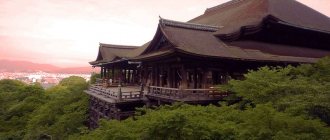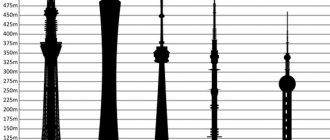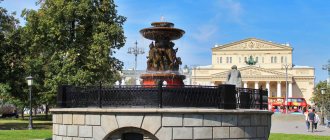Some statues are so large that they are considered the main attraction of a city or even a country. Every year, thousands of travelers come to see them and take photographs in front of the incredible sculptural object.
Photo: pp.userapi.com
Man began to build monuments since ancient times. Then the statues personified the gods. The Sphinx can be considered the most famous and impressive; in those days its size was amazing. However, today they are much more modest in size than modern creations.
Our rating includes the largest sculptural statues in the world, which show the significance of the figure depicted. Their authors wanted to show not only the monumentality of the individual, but also the importance of the conveyed idea. Judging by the numerous tourists who visit memorable places every year, they succeeded. One meeting with such a man-made miracle is enough to retain an impression for a lifetime.
Most of the sculptural monuments are cultural heritage and embody the history of states and peoples. Certain objects gain prominence on their own, regardless of the concept or person they represent.
All sculptural sculptures differ in form and execution. In our review we present the tallest monuments that are located in different parts of the world. The TOP 10 included objects with a height of more than 85 m, excluding the pedestal.
| Rating | Height | Location |
| 1. Statue of Unity | 182 m | India |
| 2. Lezhong-Sasazha | 115.82 m | Myanmar |
| 3. Buddha Vairochana in Zhaotsun | 108 m | China |
| 4. Daibutsu Ushiku | 100 m | Japan |
| 5. Goddess Kannon in Sendai | 100 m | Japan |
| 6. Goddess Guanyin in Changsha | 92 m | China |
| 7. Buddha in Ang Thong | 92 m | Thailand |
| 8. Goddess Kannon in Ashibetsu | 88 m | Japan |
| 9. Buddha in Wuxi | 88 m | China |
| 10. The Motherland is calling! | 85 m | Russia |
Reach for the skies: 10 tallest statues in the world
On October 28, 1886, the Statue of Liberty was unveiled in New York. This is one of the most famous landmarks in the USA. She greeted migrants arriving in the country and was a symbol of the end of a long journey across the ocean.
The composition was created by the sculptor Frederic Bartholdi, and the famous Gustav Eiffel worked on the internal supporting structure. France gave the United States a copper statue of the Goddess of Liberty in honor of the 100th anniversary of the country's independence. She was brought to New York on June 17, 1886. For those times it was one of the largest sculptural compositions: it was assembled and installed within four months. The total height of the statue together with the pedestal is 93 meters, without it - 46 meters.
Now this sculptural composition occupies only 29th place (if we count the height without the pedestal) among other monuments in the world. “360 Moscow Region” decided to recall the tallest monuments that people have ever erected on the planet.
Spring Temple Buddha
Photo: Public domain
The Buddha of the Spring Temple is the tallest sculptural composition in the world, located in Henan Province in China. The statue depicts Buddha Vairochana. It was installed in 2002.
The height of the statue is 128 meters including a pedestal made in the shape of a lotus. The entire structure stands on another pedestal, the height of which is 25 meters. The monument will rank first in the ranking of the tallest statues for a long time: in 2010, the hill on which it stands was reconstructed, so its total height reached 208 meters, which allowed the sculptural composition to be included in the Guinness Book of Records.
About $55 million was spent on the project. The construction of the monument was announced shortly after the Taliban blew up the Bamiyan Buddha statues in Afghanistan. The sculptural composition was named after the temple located near the Tianrui hot spring. The water in this reservoir warms up to +60 degrees, and people believe in its healing properties.
Lezhong-Sasazha
Photo: Public domain
Lezhong Sasazha is a religious sculptural structure. The monument took 12 years to build in Sikaing County, Myanmar. The statue is a 116-meter tall image of Buddha and stands on a pedestal 13.4 meters high. The total height of the structure is 129.24 meters. The monument is painted yellow. The official opening of the monument took place on February 21, 2008.
Ushiku Daibutsu
Photo: Public domain
And again the Buddha statue (Daibutsu means “big Buddha” in Japanese). It is located in the city of Ushiku, 50 kilometers from Tokyo (Japan). The height of the sculptural composition is 100 meters, and the platform and lotus-shaped plinth increase it to 120 meters. This statue was built in 1995. The weight of the monument is four thousand tons, and inside it consists of more than six thousand bronze plates.
The monument was erected in the center of Arcadia Mustache Park. The name of the resting place in English is an anagram of the sutra Amida's Radiance and Compassion Actually Developing and Illuminating Area (Amida's holiness and mercy exalt and sanctify this place).
Goddess Kannon Statue
Photo: Public domain
A 100-meter monument erected in honor of the goddess Kannon is located in the city of Sendai (Japan). Inside the monument there is an elevator that can take tourists to the very top of the sculptural composition, from where a breathtaking view of the surrounding area opens. Other interesting objects can be seen inside the monument: it contains 33 deity statues, symbolizing human desires, and the Kannon Temple, which is also located inside the monument, displays 108 Buddhas, symbolizing suffering and delusion.
Kannon is the goddess of mercy in Japanese mythology. She is often depicted as having many arms. According to legends, she can appear in 33 images, one of them is Maneki neko - a cat with a raised paw, which attracts money and good luck.
Monument to Peter I
Photo: Ramil Sitdikov
The official name of the monument is “In commemoration of the 300th anniversary of the Russian fleet.” It was installed in the capital by order of the Moscow government in 1997. The height of the sculptural composition is 98 meters. Especially for him, an artificial island was poured at the separation of the Moscow River and the Vodootvodny Canal. Zurab Tsereteli worked on the composition.
In technical terms, the monument is a unique engineering structure: bronze cladding parts were hung on the frame, and the lower part of the sculptural composition, the figure of Peter I and the ship were assembled separately and then mounted on a pedestal. The cables were woven from several cables and secured so that they remained motionless despite the wind.
The monument was opened on September 5, 1997 as part of the celebration of the 850th anniversary of Moscow. It is noteworthy that one of the most famous landmarks of the capital was unanimously condemned by architects and the public: rallies were even held against the installation of the monument.
Goddess Guanyin statue
Photo: Public domain
The monument to the goddess of mercy Guanyin (analogue in Japan - the goddess Kannon) was opened in Changsha (China) in 2009. The total height of the sculptural composition is 99 meters, without the pedestal - 92 meters.
The monument also has another name: “Guanyin with a Thousand Arms”. According to Chinese legends, the goddess of mercy has a thousand eyes and as many hands to help all those who suffer. The statue fully corresponds to the legends: it has many hands and faces. The monument is covered with gold paint, which is constantly renewed.
Buddha statue
Photo: Public domain
The list of the tallest sculptural compositions in the world includes another Buddha statue. The monument is located in Ang Thong province in Thailand. The height of the statue is 92 meters, width - 63 meters. The sculptural composition was erected over 18 years. The structure was made of cement and covered with gold. The monument was opened in 2008.
Statue of the goddess Kannon in Ashibetsu
Photo: Public domain
The list of the tallest statues included another monument erected in honor of the goddess of mercy - the monument to the goddess Kannon in Ashibetsu (Japan). The height of the memorial is 88 meters. The statue was unveiled in 1989.
This magnificent monument is also a reminder of the broken dreams of the people who erected it. In the late 1970s, the city, in an attempt to revive the economy, decided to rely on tourism and build a hotel, a monorail and a giant statue. However, it was not possible to attract customers and money: tourists rarely visit Asibetsu.
Buddha statue in Wuxi
Photo: Public domain
This 88-meter bronze Buddha statue was installed near the city of Wuxi (China). The first stone of the monument was laid in 1994, the opening of the facility took place in 1997. This monument is considered the largest bronze statue in the world: its weight is about 800 tons.
The structure was supposed to become a place of mass pilgrimage for both Buddhists and tourists: the monument was erected near the state tourist area of Lake Taihu. The monument was erected with donations from city citizens and residents of some other regions of the country.
“The Motherland is calling!”
Photo: Konstantin Chalabov/RIA Novosti
“The Motherland is calling!” -, which is located in Volgograd, on Mamayev Kurgan. The sculptural composition was installed in 1967 and is still included in the list of the tallest statues in the world. Sculptor Evgeniy Vuchetich and engineer Nikolai Nikitin worked on the monument. The statue represents the figure of a woman with a sword in her hand and symbolizes the Motherland, which calls people to battle with enemies.
The height of the monument is 87 meters, without the pedestal - 85 meters. The mass of the female figure is about eight thousand tons, and the inside of the monument is hollow and consists of individual cells. The sword is 33 meters long and originally weighed 14 tons. In 1979, the sword had to be replaced due to the blade swinging during windy conditions.
Construction of the monument began in May 1959. At the time of the creation of “The Motherland Calls!” was the tallest statue in the world. The sculptural composition was installed on an artificially created foundation 16 meters deep. Back in March 1965, fears arose that the monument would be short-lived: the monument was erected on the so-called Maikop clay, which was slowly but still moving towards the Volga. And in 2013, Moscow architect Vladimir Tserkovnikov, in a letter to the Minister of Culture Vladimir Medinsky, expressed concern about the state of the foundation of the Motherland. In his opinion, Nikitin made mistakes when designing the monument, and the monument “is on the verge of death.”
“Motherland” is part of a triptych that also includes the “Warrior Liberator” monument in Berlin, depicting a soldier with a lowered sword, and “Rear to Front” in Magnitogorsk, where a worker hands over a sword forged in the Urals to a warrior.
Thus, the tallest statues included mainly religious monuments of Buddhism: eight of them were eight out of ten. All monuments were erected within the last 50 years. The list included statues that were installed in China, Japan, Russia and Myanmar.
Let us remind you that a monument in honor of Prince Vladimir may appear in Moscow. The height of the monument together with the pedestal will be more than 24 meters, the total weight will be about 330 tons. Earlier it became known that the installation of the monument to Prince Vladimir was postponed to the spring of 2021. Based on the voting results, they plan to install the monument on Borovitskaya Square. Read more>>
Temple of the Goddess Hasedera
Hasedera is the Goddess of mercy, love and compassion, called to save all living people on Earth.
According to legend, in 721, in a place called Khase, a large camphor tree was found by a monk. By order of the monk, two eleven-headed statues of the Goddess of Mercy were made from wood. One statue was left in the city of Nara, the second part, larger in size, was thrown into the sea after reading a prayer, so that the Goddess herself should choose a place for the temple and bless it. After 15 years, the statue washed up on the shore of a beach near the city of Kamakura, after which Hasedera Temple was built in 736, which is one of the 33 shrines in the Kanto region.
The temple houses a gilded eleven-headed statue of the Goddess of Mercy, Hase. The height of the statue is 9.18 meters. It is noteworthy that the statue is made of a single piece of wood and is the tallest wooden sculpture in Japan. It was forbidden to photograph the statue, so I will try to describe it. A standing statue of a goddess with a staff in her right hand and lotus flowers in the other, behind the goddess is a large golden leaf. What I remember is that the clothes have very detailed patterns, which indicates labor-intensive work. The heads of eleven small Buddhas peek out above the head of the statue; I couldn’t see their expressions. But it is said that all eleven faces have different expressions to show that the goddess listens to all categories of people and has compassion for absolutely all their sufferings.
In general, Hase Kanon is a genderless creature for the Japanese, it’s just that for some reason the word Kannon began to be translated into English as a Goddess, most likely simply based on external features.
Despite the fact that the entire architectural complex is named after the Goddess Hasedera, her statue is not the only interesting place to visit.
Along the way we see an architectural composition of the four Shitenno ("Four Royal Maidens" or "Four Heavenly Kings") at the edges and the God Taishakuten in the center. Taishakuten is one of the most powerful Gods of Buddhism, also the God of war, thunder, thunder and lightning. It is not difficult to draw an analogy with Zeus among the ancient Greeks. Subordinate to him are four Heavenly Kings - Shitenno - protectors of the four cardinal directions, who serve to drive away evil spirits.
On the territory of the temple we were able to visit the small cave Benten-kutsu - the temple of the Goddess Benzaiten (Benten) and 16 other Deities
Benzaiten - Goddess of female beauty and health, the only woman among the seven Gods of luck. She is also the Goddess of the sea and represents everything that flows (water, music, speech, etc.). She is most often depicted holding a Japanese mandolin and playing a lute.
The cave also contains 16 stone statues of other deities. Among them are the Gods of music, food, sake, accidents, and fine arts.
The next room of the cave is filled with small wooden Benzaitens, which people leave after writing their wishes on them. In front of the entrance there is a box with figurines and the price is indicated. You throw coins into a box (this is the culture of people, when everything is built on pure trust and honesty!!!)
There are statues of Gods everywhere and even these traces of Buddha
After a short walk we find ourselves surrounded by 1000 little Fukuji Jizo (happy Jizo). The most important of them, Jizo Bosatsu, is represented in a monk's robe with a halo around his head and a staff in one hand.
It is very difficult to find an exact definition of Jizo. In some sources, Jizo - Gods who protect children, patronize pregnant women. According to other sources, Jizo is the patron saint of the souls of children who died due to premature birth, abortion and stillbirth. According to Buddhist canons, the souls of these children are sent to hell because they caused grief to their parents. Jizo acts as their protector. One way or another, that is why, very often in other temples, Jizo statues were dressed in pink bibs or knitted hats.
Already at the exit we noticed a lovely creature - Nagomi Jizo - a symbol of calm and inner peace.
One look at them calms you down, doesn’t it?!
Story
Taira no Kiyomori founded Rengeo-in ("Temple of the Lotus King") in 1164 by order of Emperor Goshirakawa. At that time, the ruler had already retired from business and devoted himself to serving the Buddha. In 1249 the temple was destroyed by fire and rebuilt several decades later. The current buildings on the site date back to 1266.
The main treasure kept in Sanjusangendo is the 1001 statue of the goddess of mercy Kannon. The statues are installed on either side of the main statue, in rows along the long wall of the Main Hall. Kannon is guarded by 28 other incarnations of Buddha, including the wind god Fujin and the thunder god Raijin. 124 sculptures date back to the 12th century - they were saved from the fire. The rest were restored simultaneously with the buildings of the temple complex.
Atlas, Cities and countries, seas and oceans. Around the World, Mysteries of the 20th century, The whole world is in your hands
Buddhism and Shintoism are almost equally close to the Japanese heart. Therefore, the Kiyomizu-dera Buddhist Temple is respected by all residents of the country. Nestled on a picturesque mountainside, in a place where a sacred waterfall gurgles and sparkles, the temple has become a place of pilgrimage for Buddhists not only from Japan. The Temple of Pure Water on Mount Otova - that is its full name - arose under almost fabulous circumstances. Legends and accurate data were so intricately mixed that they became inseparable. Monk Entin found the waterfall, he also carved a statue of the goddess Kannon and - with the support of the powerful shogun - built a temple, which later became a national treasure of the country.
TEMPLE OF PURE WATER
“Clean water”—there really is such a thing in the temple—is actually a very broad concept that reflects the deep foundations of Buddhism.
The Kiyomizu-dera Buddhist temple is one of the most revered in Japan.
The temple was built east of Kyoto, on the site of the Otowa Falls, sparkling on the densely forested slope of the mountain of the same name. The full name of the temple complex is Otowan-san Kiyomizu-dera, or Temple of Pure Water on Mount Otowa.
Even in ancient times, local residents considered the waterfall to be miraculous and its water to have healing powers. Kiyomizu-dera is not the only temple of Mount Otowa, but it is considered the most outstanding.
Foundation of the temple in the 8th century. associated with the name of the monk Entin. Legend claims that, immersed in pious thoughts, En-ting wandered through the forest until he came across a stream and was amazed at the purity and freshness of its water. Taking the good water as an indication from above, the monk went upstream in search of the source. And when he came out into a clearing where thick fog had fallen, he discovered a waterfall on it. Wandering along the mountainside tired Entin, and he spent the night right next to the waterfall. In a dream, he had a vision of the thousand-armed Kannon, the faithful friend of Buddha Amitabha, revered as the goddess of mercy, always coming to the aid of a person in trouble. Kannon ordered the monk to settle next to the waterfall and not leave it. Entin not only fulfilled her will, but also immediately built a small bamboo sanctuary in honor of the goddess.
The fame of the sacred waterfall grew, and so did the number of pilgrims. A temple larger than a bamboo hut was needed. How and by whom it was built is unclear. It is known that the construction was carried out with funds allocated from the treasury by the shogun Sakanoue no Tamuramaro (758-811). According to legend, Entin's prayers addressed to the goddess Kannon healed the shogun's sick wife, and helped him defeat the Ezo tribe, which constantly threatened the security of the country from the north. In 798, the grateful Sakanoue no Tamuramaro ordered the construction of a temple on Mount Otowa.
From the very beginning of its existence, Kiyomizu-dera belonged to Hosso, the oldest school of Japanese Buddhism. Over time, the temple developed its own religious worldview - Kita-Hosso, officially adopted by the temple in 1965.
The first written mention of the temple dates back to 811, when the Kiyomizu-dera temple came under the protection of the authorities, and subsequently was highly revered by the imperial house.
Over its long history, the temple has survived many wars, attacks by robbers and fires. When Kiyomizu-dera was under the control of one of the largest Buddhist monasteries, Kofuku-ji, it was at enmity with the Enryaku-ji monastery. Armed clashes between them occurred frequently; Kiyomizu-dera suffered the most in 1165: the monks of Enryaku-ji burned the main temple and other buildings.
Only in 1633 were some of the temple buildings restored by order of shogun Tokugawa Iemitsu, a cruel and quick to kill man. Perhaps the sinister fame of the shogun had such an effect on the builders, but the buildings turned out to be surprisingly strong and have survived to this day. This was also accompanied by the fact that the newly rebuilt temple never again survived destruction.
The temple has a unique layout: it descends in ledges from the top of Mount Otova, as if repeating the cascade of a sacred waterfall.
In front of the entrance to the temple territory there is a hitching post in the national style - one of the few surviving buildings of that time, and therefore is considered a national relic. In the past, horse-drawn pilgrims would leave their horses here before passing through to pay homage to the goddess Kannon.
The Kiyomizu-dera complex consists of several temples, gates, a pagoda and other buildings arranged in apparent disorder around a waterfall. In reality, the plan of the temple is another one of the models of the world in the view of Buddhism.
16TH TEMPLE
According to Buddhist texts, Goddess Kannon has the ability to take on 33 forms to save people. Therefore, the number of temples dedicated to her is 33, each with its own image of the goddess. Each temple has its own number: Kiyomizu-dera is the 16th.
To get to the temple, you need to go through the Niomon gate with scary-looking statues. Four-meter-tall gate guards, or stone warriors, stand on both sides of Niomon. Their appearance in the temple is associated with the period of Japanese fascination with Indian mythology, from where these devas appeared.
Just outside the gate is a three-tiered pagoda, one of the tallest in Japan. In the altar of the pagoda there is a statue of Dainichi-Nyorai - “Great Shining Sun Buddha”, one of the five Buddhas of Wisdom in Vajrayana Buddhism.
Next to the pagoda is the Sutra Hall, which is a building for storing them. The most impressive thing about it is the ceiling painting depicting a coiled dragon.
A reminder of the inspirer and founder of the monastery, embodied in stone, is the Kaisando Temple. It is inhabited by the spirits of the mountain hermit Gyoei and the monk Entin. Shogun Sakanoue no Tamuramaro brought this building here from the city of Nagaoka and donated it to the Kiyomizu-dera complex to commemorate the victory over the Ezo tribes, or, as the Japanese contemptuously called them, “barbarian toads from the East.”
To the east of the Kaisando Temple stands the Central Gate of the complex under a black tiled roof resting on eight columns. A pilgrim tired of walking can drink water here from a spring in the shape of a bronze dragon.
And right outside the gate is Hondo, the main temple of the complex. Its main altar is decorated with an image of the eleven-faced and thousand-armed goddess of mercy Kannon. To her right is Bishamonten, one of the seven gods of luck in Shintoism and one of the four heavenly kings in Buddhism. The Japanese believe that Bishamonten stores untold wealth and helps to increase it. Pilgrims dreaming of getting rich shower him with gifts. To the left of the Kannon image is Jizo Bosatsu, the patron deity of children and travelers. According to legend, both figures were carved by the monk Entin when he was working on the statue of Kannon.
The Hondo Temple is adjacent to an extensive terrace. It protrudes 8 m above the cliff at a height of 13 m, and is supported by 139 pillars fastened without a single nail. In the old days, ritual dances were held on the terrace.
Nowadays people come here to admire the magnificent panorama of the surrounding area. The terrace was also part of the Nagaoka Palace. In 794, the capital was moved to Kyoto, the palace moved after the monarch and was donated to the temple, like Kaisando. Above the terrace is a roof of unusual shape, covered with shingles made of hinoki wood (a type of cypress).
To the east of Hondo is the Shakyamuni Buddha Hall, or Shakado, which is quite unremarkable in appearance. But it is known to connoisseurs of Japanese culture for the fact that since the Kamakura era (1185-1333) it has preserved the Shakado altar with three figures of Buddhas: the merciful Buddha Amitabha, as well as Nikko Bothisattva and Gekko Bohisattva - the Buddha of Sunlight and the Buddha of Moonlight.
The main shrine of the complex - a stone statue of the goddess Kannon - stands in the Hidden Temple in the center of the hall in a recess filled with water.
The waterfall, found by the monk En-ting, is enclosed in three wooden pipes and falls in three streams so that it is convenient to scoop up sacred water, finding peace and tranquility. According to legend, the waterfall is guarded by the fire deity Fudo-myo, whose ugly appearance scares away evil spirits.
And today, Buddhist pilgrims, like more than ten centuries ago, still climb up the slope of Mount Otowa to pray at the statue of the goddess Kannon and fall to one of the three crystal streams of the sacred stream.
In 1994, the temple complex was included in the list of UNESCO World Heritage Sites.
FUN FACTS
■ An old legend tells that one of the stone guards of the Niomon gate pronounces the first letter of the Sanskrit alphabet - “ka”, and the other - the last one - “ham”. That is, the wild devas, being in a sacred place, comprehended the comprehensive teachings of the Buddha.
■ The legend of the founding of the monastery is told in different ways. They say, for example, that when the monk Entin discovered a forest stream, he heard an inner voice: “Find a source whose clear waters flow into the river.” When the source was found, Entin met the Buddhist hermit Gyoei, who had been here for two hundred years in prayer to the goddess Kannon. The elder handed Entin a piece of wood in which the spirit of the goddess of mercy Kannon was imprisoned. The monk realized that the hermit was one of the incarnations of the goddess Kannon, who had returned to heaven. He cut out an image of Kannon and placed it in a bamboo hut he built with his own hands. She became the predecessor of the temple.
■ Hondo Temple is where the ema ritual tablets are kept. They are presented to the temple by pilgrims, begging the goddess for relief from illness and good luck in business. Almost all temples in Japan have Ema, but the collection at Hondo Temple is unique. Five tablets from the collection have been declared important cultural property by the government and placed in the temple treasury. Among them are medieval works of art “The Horse and the Monkey” and “The Mighty Knight Asahina Measures Strength with the Demon.” The largest ema, measuring 2.67 x 3.60 m, depicts a dancer surrounded by spectators.
■ Water from the three streams of the Otowa Falls is scooped up with a cup tied to a long pole. It is generally accepted that one stream gives longevity, the second - success in studies, the third - happiness in love. The Japanese consider drinking from all three streams in one visit a manifestation of blatant greed. But even they cannot explain why the fire deity is entrusted with protecting water.
■ As of 2010: 79.2% of Japanese profess Shintoism and 66.8% Buddhism. Both religions coexist quite peacefully in the Japanese mentality, and therefore the temple of the Kiyomizu-dera temple is equally a national treasure for all Japanese.
■ The goddess Kannon is called differently in other countries where Buddhism is widespread: in China - Guanyin, in Korea - Kwangseum, in Vietnam - Quan Am. In most temples where there is an image of her, she appears with four, eight or a thousand arms. It is extremely rare (due to the technical complexity of translating the image into stone and paint) to find images of a goddess with 84,000 arms. The goddess needs such a number of hands in order to simultaneously come to the aid of as many as possible who are eager to participate. The eyes depicted on each palm help the goddess to find them.
■ In Japanese there is a common expression “to jump from the terrace of Kiyomizu-dera”, which means “to irrevocably decide on something.”
■ Shogun Tokugawa Iemitsu (1604-1651), on whose orders the Kiyomizu-dera temple was restored, ruled Japan from 1623 until his death in 1651. An almost thirty-year reign during the years when other shoguns were replaced almost annually (poisoned, hanged, drowned or killed during the riots), was explained by the severity with which Tokugawa Iemitsu suppressed any attempt to take up arms against him. On pain of death, he forbade the samurai to change owners at their own discretion, slaughtered gangs of “free” samurai (highway robbers), and took away from the peasants everything that could resemble weapons. Equipment for working in the fields was given to them according to lists. And he even introduced something like a “registration”, ordering all residents of the country to come to the nearest monastery and register. He banned Christianity as a “mind-stirring” religion. The Japanese who were abroad during his reign were denied entry into their homeland so that they would not bring in “corrupting” ideas.
ATTRACTIONS
■ Kiyomizu-dera temple complex (XIV-XVII centuries): Otowa-no-taki waterfall, Kaisando, Hondo and Sacred temples, Sta Jizo chapel, Sutra hall, Buddha Shakyamuni (Shakado), Jisuin temples, three-tiered pagoda, sacred stones, Niomon and Central gates, terrace, hitching post.
NUMBERS
Total area: 0.17 km2. Average height above sea level m.: 120 m. Distance: 513 km 3. from Tokyo.
GENERAL INFORMATION
Location: slightly south of the central part of the island. Honshu. Administrative affiliation: Higashiyama district, Kyoto, Kyoto prefecture, Kansai region. Built: 778-798 Language: Japanese. Ethnic composition: Japanese. Religion: Buddhism. Currency: Japanese yen. Airport: Osaka International.
Atlas. The whole world is in your hands #364
Read in this issue:
CASTILLA-LEON REGION: The main pillars of the two allied kingdoms KIYOMIZU-DERA, Sanctuary: the thousand-armed Kannon EASTERN ANATOLIA: The Roof of Turkey TAMAULIPAS: Oil Region IVANOVSKAYA REGION: Calico Region TOKELAU: Three Atolls
Like
SocButtons v1.5



